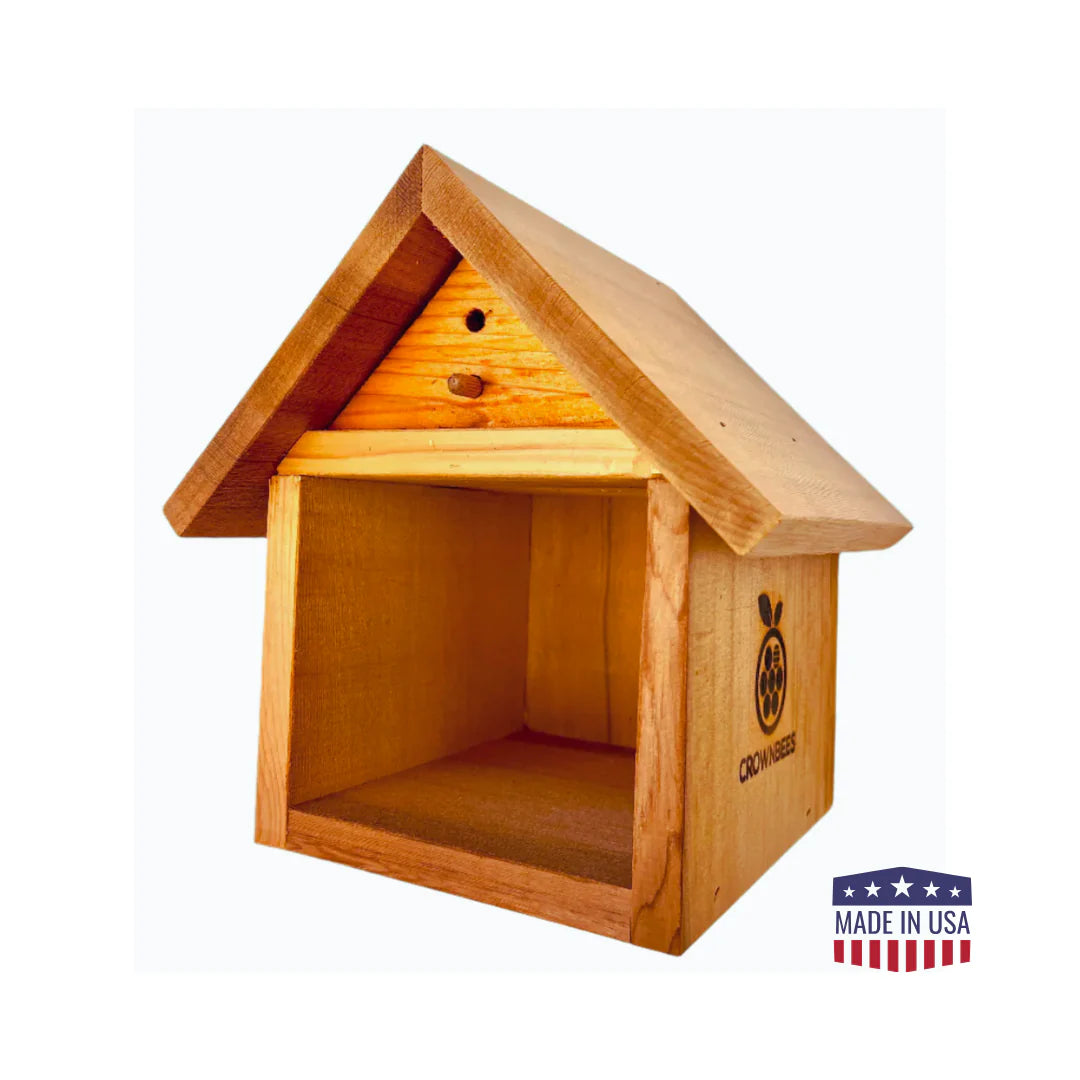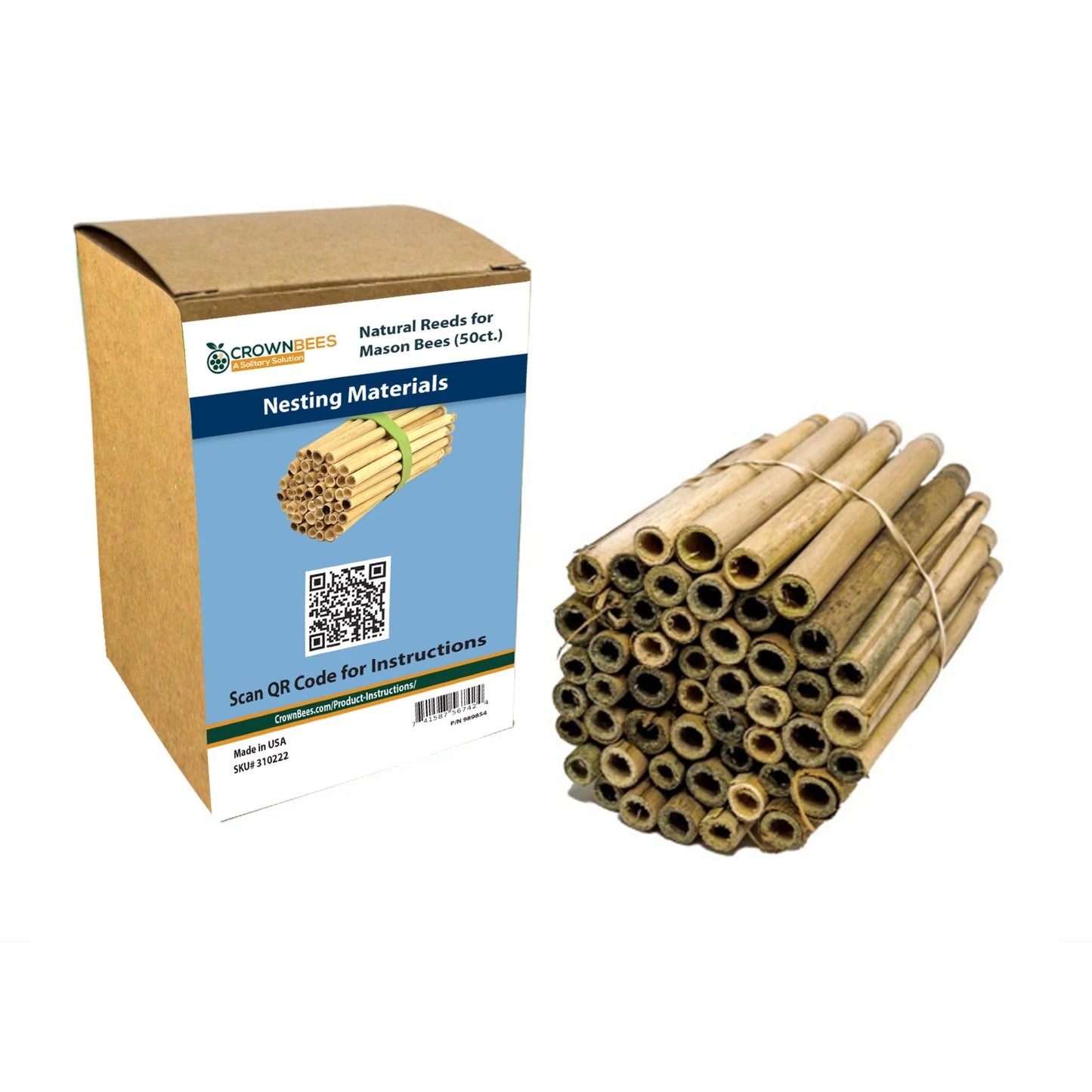
The development time for leafcutter bees is temperature-dependent. Since climate varies widely across North America, this calendar breaks down leafcutter bee raising tasks by season (and temperatures) to ensure this guide is helpful no matter where you live!
And, don't worry about remembering or searching for this information throughout the year. We love sharing our knowledge and helping our community of bee raisers be successful, so each month, we spend time thoughtfully crafting our BeeMail with seasonal reminders and tips to help you along the way. Click here to sign up now!
Late Spring, Early Summer
Inspect and take inventory of your 6mm nesting materials. Under suitable conditions, female leafcutter bees can fill 2-4 nesting cavities in a single summer. We recommend at least two nesting cavities for each female you'd like to support. You can use the same bee house for leafcutter bees that you did for spring mason bees. However, you should remove mason bee nesting materials and clean out any debris or pests before placing new leafcutter nesting materials in the house.
If you purchase leafcutter bees from us, you'll receive around 200 cocoons per order. We send way more than you'll need because leafcutter bees have a higher dispersal rate than mason bees. So, please don't expect all 200 to stick around (the nature of nature)! Even with many flying off in search of another nesting site, you'll still have plenty to pollinate your yard and garden!
Summer
When blossoms are open, and daytime temperatures reach a consistent 75°F/24°C, it's time to release your leafcutter cocoons. Unlike mason bees, you cannot store leafcutter bees in the refrigerator until the temperatures are just right. If you are new to bee raising, select a shipping date as close as possible to when you would like the leafcutter bees to begin pollinating. Bees will arrive about ready to emerge and fly!
Intact cocoons can't regulate their temperatures, so if temperatures are above 90°F/32°C, you may consider allowing the cocoons to emerge indoors (in a breathable bag) and release them in the early morning hours as they emerge.

Fall, Winter, Early Spring When temperatures cool to 60°F/15°C, females will have completed their nesting for the season. Gently remove the nesting materials from the bee house and store them in a BeeGuard Bag or another tightly woven yet breathable mesh bag, with the leaf-capped end facing up. Leafcutter bees hibernate as delicate larvae inside their leafy cocoons over the fall and winter. The bag protects developing bees from pests and parasites.
The storage area should mimic nature's temperatures and always be kept in an unheated and unconditioned area, such as a garage, shed, or overhang. If you don't have an unheated indoor space, they can remain outside but must be protected from the rain, snow, and predators.
Early Spring
If you have filled leafcutter nests from the previous year, you can harvest the cocoons in early spring. Harvesting cocoons is the best way to prevent the spread of disease and reduce pest populations. If you also raise spring mason bees, a good time to harvest leafcutter cocoons is when you release your mason bee cocoons.
Because the development of leafcutter bees is temperature-dependent, they'll need to be incubated in the spring to help them fully form into adult bees and emerge. If you incubate your own harvested cocoons, plan to time their emergence with your summer weather and open blooms.



